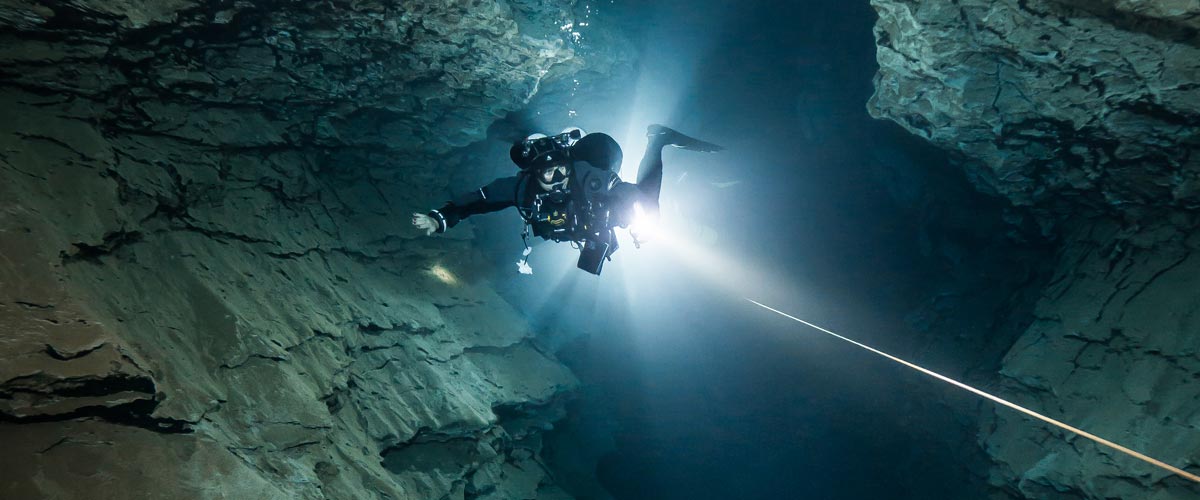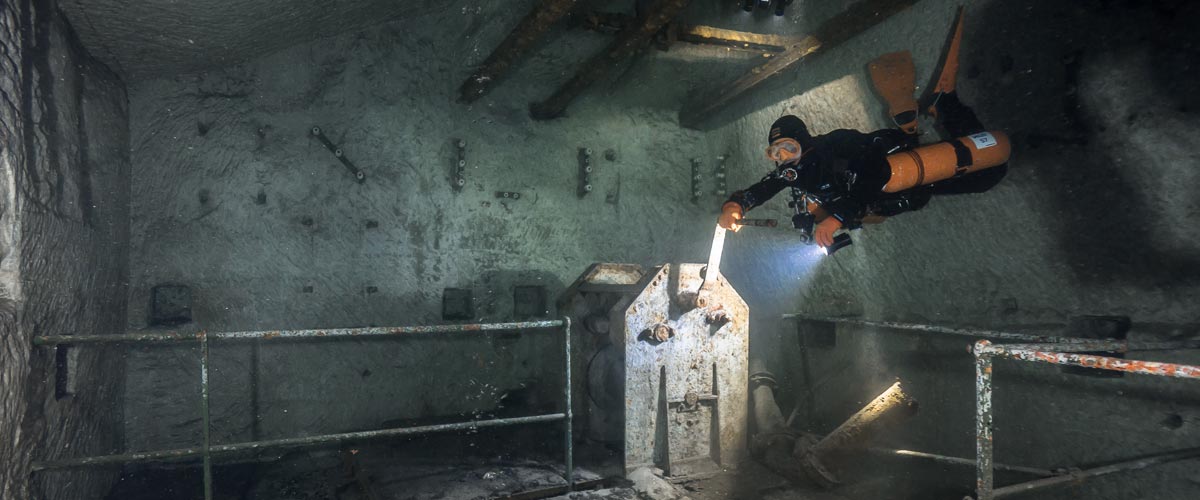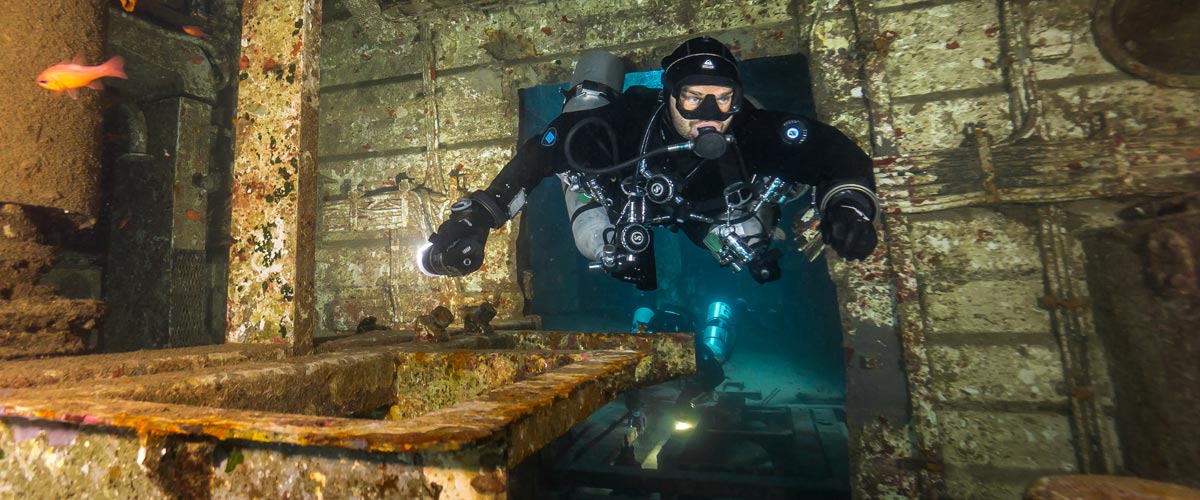Dive Training Blogs
Five things you should know about PFO

By: Douglas Ebersole, MD
The relationship between decompression illness (DCI) and patent foramen ovale (PFO) has been popularized in the diving community over the past 5-10 years.
Here are five things you should know about PFOs:
- A PFO is NOT a disease. As a fetus, we all have a patent foramen ovale. It is a “flap” in the wall between the top two chambers of the heart which directs oxygenated blood from the placenta to the left side of the heart, thereby bypassing the lungs. Once we are born and begin to use our lungs to oxygenate blood, this “flap” closes in about 75% of people and forms a solid wall between the top chambers of the heart. However, in about 25%, it remains open and can be a pathway for blood clots or bubbles to get to the left side of the heart and cause a stroke or DCI.
- Having a PFO increases the risk of decompression illness by about fivefold. For sport diving, this increase is from about 2 episodes of DCI per 10,000 dives to about 1 episode per 1000 dives. For technical diving, this fivefold increase persists but is now 5 times a much larger baseline risk depending on the particular dive profile.
- PFOs are associated with certain types of decompression illness but not others. The types of DCI associated with PFO are cerebral (stroke), spinal (paralysis, urinary retention), cutaneous (a distinctive skin rash), and inner ear (vertigo). Joint pain as a manifestation of DCI is NOT felt to be related to PFO.
- The problem is the “bubble” not the PFO. The problem in DCI is with the inert gas load. Anything the diver can do to lessen his or her inert gas load such as fewer dives per day, shallower dives, shorter dives, “padding” decompression, etc., will lessen the risk of DCI – whether or not he or she has a PFO.
- Closure of the PFO is an option in carefully selected cases. If a diver has recurrent episodes of the type of DCI associated with a PFO (cerebral, spinal, cutaneous, inner ear), he or she has several options. First of all, the diver could stop diving. Most divers reading this would probably not choose this option, but it is always a consideration. Secondly, the diver could dive more conservatively. This approach has been shown to reduce the incidence of DCI in sport diving for patients with PFO. The restrictions include diving shallower than 100 feet, no more than one or two dives per day, no decompression diving, diving nitrox on air profiles, and long safety stops. For technical diving, though it has not been validated in controlled studies, the same considerations of fewer, shorter, and shallower dives along with “padding” decompression should be effective as well. Finally, divers could elect to have the PFO closed. This is an outpatient procedure done through a needle stick in the groin with a success rate of well above 95% and a complication rate of around 2-3%, the vast majority of which are minor complications such as palpitations and groin bruising. Serious complications are rare but do occur and must be considered when weighing the risks and benefits of PFO closure. After the procedure, patients are usually on aspirin and clopidogrel (Plavix) for 3-6 months.
Decompression illness is a poorly understood risk for scuba divers and especially for technical divers. Conservative diving practices are the best way to lower the risk of DCI. Despite these practices, some divers have recurrent Type II or skin bends – the types associated with PFO – and should consider being evaluated for PFO. The best screening test is a “regular” transthoracic echocardiogram with the injection of agitated saline (“bubble study”). If this is inconclusive and the clinical suspicion is high, a transesophageal echo could be performed. If a PFO is found, the diver could choose to stop diving, dive more conservatively, or, in selected cases, have the PFO closed.
Douglas Ebersole, MD is a TDI KISS CCR Advanced Mixed Gas Instructor Trainer and an SDI instructor as well as an interventional cardiologist specializing in coronary and structural heart interventions at the Watson Clinic in Lakeland, Florida.
To find out more about International Training, visit www.tdisdi.com.

Blogs
Intro to Tech: What is it about?
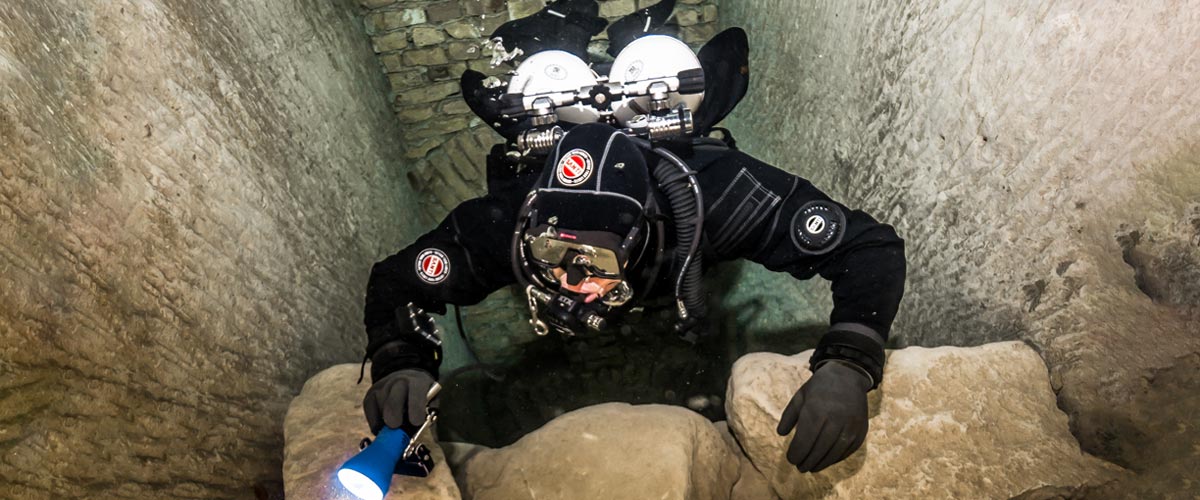
Article by José Pablo Mir
Pictures by Cezary Abramowski
The world of technical diving is exciting. It opens the door to new sites, depths, and bottom times. More importantly, it opens our minds to a new way of planning, facing, and experiencing dives, even those not purely technical.
Becoming a technical diver is a process, and like in other aspects of life, we should find the proper entry point that suits us best based on our knowledge and experience. The Introduction to Technical Diving course from TDI -the world’s largest and most recognized technical diving teaching organization- is the best option for divers who have yet to gain experience in the fundamental aspects of this new practice. The course’s content and its embrace of new techniques and technologies make it possible to acquire a solid foundation to learn and gain experience in this practice properly.
Becoming a technical diver is not something that happens overnight, whether deciding to become one or receiving a certification card stating we are now technical divers. It is a slow process extending farther away than any introductory course. It requires effort and dedication. But it will bring us satisfaction from day one -or two.
It is a matter of mentality
First, we must understand and accept that technical diving, involving greater depths, longer bottom times, exotic gases, virtual or real ceilings, and more, comes with higher levels of risk than the sport diving we have been practicing until now.
Although this discussion usually starts with a warning about risks, as I’ve done in the previous sentence, our practice is not a game of chance.
Technical diving is a rational activity that requires maturity and good judgment, and we will put everything into ensuring that each dive is a successful one -meaning we return from it safe and sound. With this understanding, we will strive to establish a mental attitude more aligned with our practice and its realities.
This new “technical diver” mindset we will develop will lead us to be more cautious in our executions, more analytical in our plans, more rational in our strategies, and more detailed in our procedures.
Experience will keep teaching us to know ourselves better, to keep our anxiety and other emotions under control, and to manage our impulses. Over time, our senses will sharpen, and we will be more attentive to the particulars of the situation we find ourselves in.
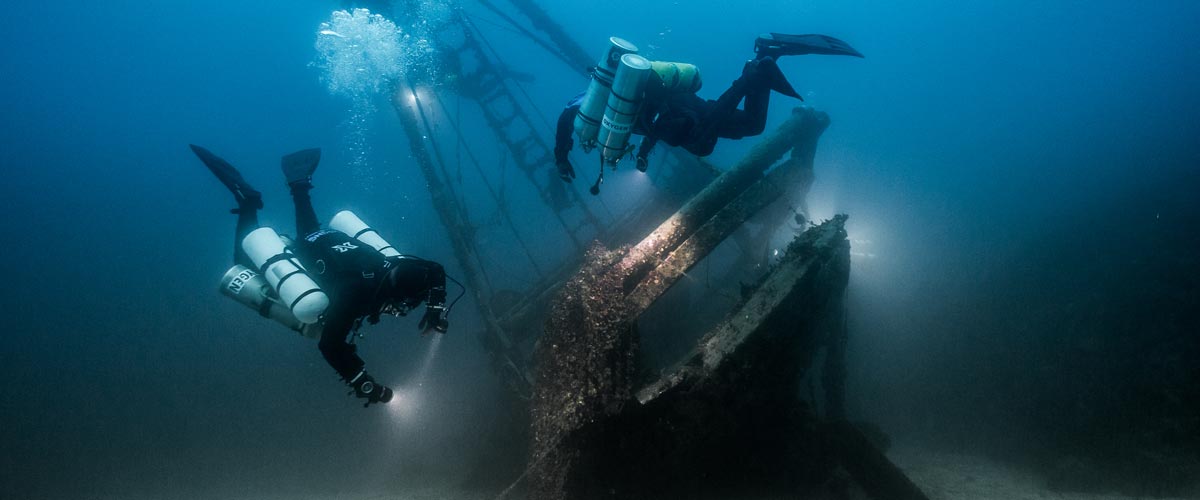
Strategies and procedures
Our strategies, those broad guiding lines tracing the path to follow, from how to approach planning to where, with what, and how we are willing to get there, will be more specific and more practical. Not because they magically become so, but because we will consciously and deliberately frame them that way.
We will establish clear, concise, and realistic procedures. Not only for the undesirable situations that may present themselves but also for those that are part of our dive objectives.
Even though, as technical divers, we often use equipment different from what we were previously accustomed to, it is essential to note that the gear does not make the diver. In a way, we could consider such equipment as the necessary tools to implement what our goal seeks to achieve, according to our strategies and procedures.
Technique plays an important role
We must put our greatest effort into learning and perfecting the different techniques we will be acquiring. Buoyancy, trim, propulsion, cylinder handling, deploying DSMBs and lift bags, valve drills, and more are essential skills we must begin to master to progress in our art. What we cannot do, when we need to do it, can harm us.
Our techniques must be effective and achieve the purpose for which they were devised. But they must also be efficient and require the least resources possible, including the time they take and the effort they demand. Effectiveness and efficiency will prevail over beauty and other considerations that may come to mind, although none of them should be mutually exclusive. A technique executed efficiently and effectively tends to have an inherent beauty.
Refining techniques is a lifelong mission. Some of them will be easy to master from the go; others, on the other hand, will be our life mission and will require many repetitions just to resemble the idea we have in mind of how they should be executed.
We must consider the environment
Our learning, the needs and musts of the practice we engage in, the experience we gradually gain, our strategies and procedures, and even our equipment and tools change with the environment.
Diving in the ocean, everything about us must be suitable for ocean dives. Conditions there rarely emulate those found in a pool, lake, or river. Variable winds and currents, greater depths, visibility conditions, other divers with uncertain skills around us, marine life, maritime traffic, distance from the coast, and many other factors add complexity and uncertainty.
It is never necessary to master the pool on the first day, but planning and aspiring to gradually cope with the ocean’s conditions is essential.
The cost of good training
We are aware that our resources are often scarce in relation to the possibilities of use we could give them if they were not. To a greater or lesser extent, we are part of the economic reality in which we are embedded.
Fortunately, the cost of good technical diver training is not an entry barrier. Comparing training and equipment costs, we see that the former are generally lower. Yes, lower cost for personalized service, essential to our future
performance and safety, than for a series of mass-produced products that are mere, albeit necessary, tools for an end.
The value of good training
The value of the training we received encompasses a range of characteristics, from emotional and methodological to technical and technological. TDI and its Introduction to Technical Diving course offer a deep and modern approach, with a teaching strategy that aims to create thinking divers, not merely obedient ones.
As technical divers, our knowledge is our primary tool. In this type of activity, what we don’t know can harm us.
Is this course optional?
Unfortunately, the fact that this Introduction to Technical Diving course is not a prerequisite for any subsequent training is an invitation to consider it optional. And we all know what usually happens to “optional” under budget constraints.
However, this course should be seen as optional only by those divers who are somehow familiar with the use of technical equipment, who have a mindset more in line with the requirements of this type of diving, who plan and execute the dives the proper “technical” way, who know their gas consumption rate, who are not intimidated by non-decompression tables, who feel comfortable using their dive computers, and know the techniques and have at least an acceptable level of buoyancy, positioning, and propulsion. Those can go straight to a more advanced training course, such as TDI’s Advanced Nitrox.
We must ask ourselves whether or not we are in that group.
Remember our goal: to have fun
Recreational diving is our passion. Jumping into the water carrying heavy equipment and having properly dotted our I’s and crossed our T’s have only one ultimate goal: fun. This is the activity we have chosen as a hobby. We must enjoy it; it must give us pleasure and make us vibrate.
Having a good time is not optional!
Blogs
Four opportunities to go pro in 2024 with Dive Friends Bonaire
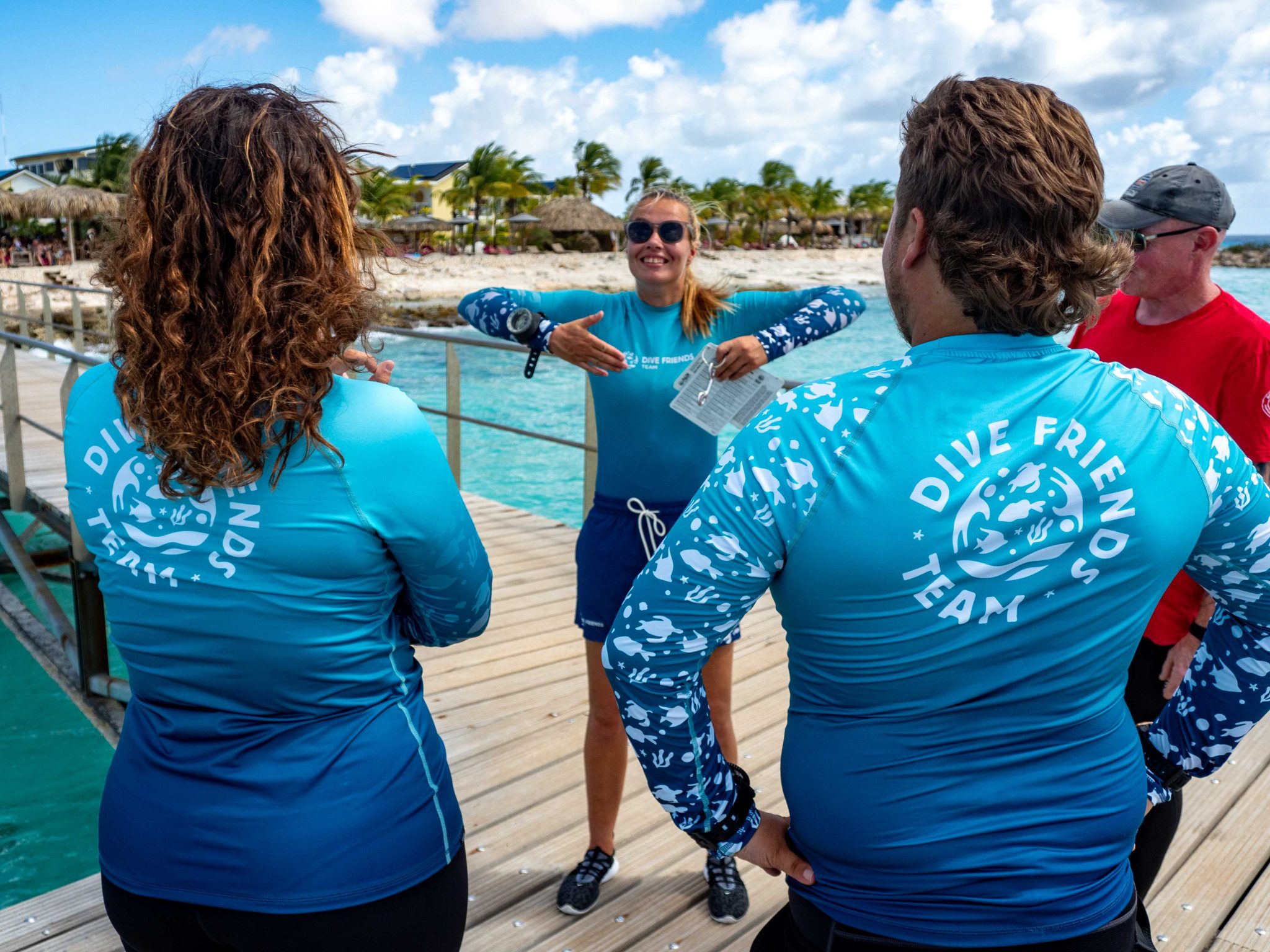
Dive Friends teaches the Instructor Development Course (IDC) several times a year to students who are eager to share their passion for diving with the world.
Dive Friends is known for the personal approach throughout the course. Their in-house course director will lead the students through every essential step, mentoring them to achieve their fullest potential as a dive instructor.
Applications for the following IDC start dates are now open:
- 12 April
- 5 July,
- 20 September
- 29 November
Partnership with Casita Palma
If the student opts for the IDC-Deluxe or IDC-Supreme package, their accommodation will be arranged for them at Casita Palma. This small and quiet resort is within walking distance from Dive Friends Bonaire’s main dive shop location and has everything you need to relax after an intense day of IDC training. Breakfast is included, so the student will always be fuelled and ready for their day.
Contact Dive Friends Bonaire’s Course Director Eddy for more information: coursedirector@divefriendsbonaire.com.
-

 News3 months ago
News3 months agoHone your underwater photography skills with Alphamarine Photography at Red Sea Diving Safari in March
-

 News3 months ago
News3 months agoCapturing Critters in Lembeh Underwater Photography Workshop 2024: Event Roundup
-

 Marine Life & Conservation Blogs2 months ago
Marine Life & Conservation Blogs2 months agoCreature Feature: Swell Sharks
-

 Blogs2 months ago
Blogs2 months agoMurex Resorts: Passport to Paradise!
-

 Blogs2 months ago
Blogs2 months agoDiver Discovering Whale Skeletons Beneath Ice Judged World’s Best Underwater Photograph
-

 Gear Reviews3 months ago
Gear Reviews3 months agoGear Review: Oceanic+ Dive Housing for iPhone
-

 Marine Life & Conservation2 months ago
Marine Life & Conservation2 months agoSave the Manatee Club launches brand new webcams at Silver Springs State Park, Florida
-

 News3 months ago
News3 months agoWorld’s Best Underwater Photographers Unveil Breathtaking Images at World Shootout 2023















